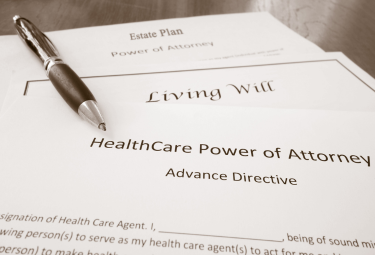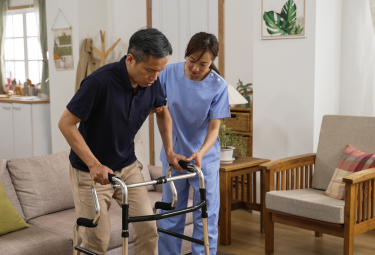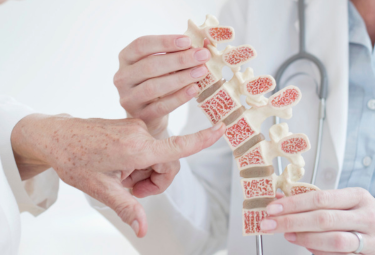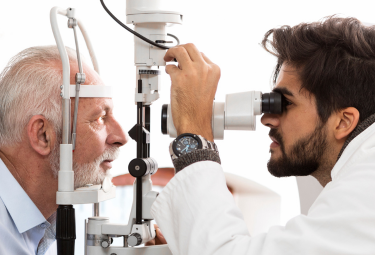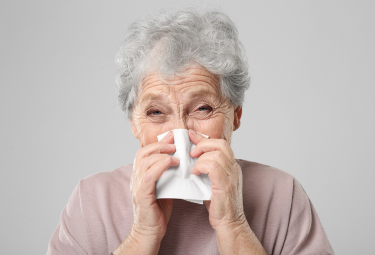Preparing a Living Will
April 8, 2025If you’re seriously ill and can’t communicate your wishes about medical care, a living will can help ensure you get the care you want. A living will is an important part of advance care planning, which involves discussing and preparing for future health care decisions in the event you can’t make them. These decisions are often put into legal documents called advance directives. A living will is one of the most common types of advance directives. The other common advance directive is called a durable power of attorney for health care, which names a person (called a health care proxy) who can make decisions on your behalf.
What is a living will?
A living will is a legal document that tells doctors how you want to be treated if you cannot make your own decisions about emergency treatment. In a living will, you can say which common medical treatments or care you would want, which ones you would want to avoid, and under which conditions each of your choices applies.
This is different than a will, which provides legal guidance about a person’s estate — their property and financial assets — as well as care for a child or adult dependents, gifts, and end-of-life arrangements such as a funeral or memorial service and burial or cremation.
What kinds of decisions are covered in a living will?
Through a living will, you can share your preferences about the use of emergency treatments to keep you alive. You should also talk with your health care proxy about your choices. Decisions that might come up at this time relate to:
- CPR. This procedure tries to restore your heartbeat if your heart stops or is in a life-threatening abnormal rhythm. It involves repeatedly pushing on the chest with force, while putting air into the lungs. This force can sometimes break a person’s ribs. Electric shocks, known as defibrillation, and medicines might also be used as part of the process. The heart of a young, otherwise healthy person might resume beating normally, but CPR is less likely to work among older adults who have chronic medical conditions or are hospitalized with a serious illness.
- Ventilators. If you are not able to breathe adequately, you may need a ventilator, a machine that uses a tube in the throat to push air into the lungs to help you breathe. Inserting the tube down the throat is called intubation. Intubation can be very uncomfortable, so medicine is often used to keep the person sedated. If you are expected to remain on a ventilator for a long time, a doctor may insert the tube directly into your trachea (a part of the throat) through a hole in the neck. This is called a tracheotomy. For long-term help with breathing, this procedure makes it more comfortable. People who have had a tracheotomy need additional help to speak.
- Pacemakers and ICDs. Some people have pacemakers to help their hearts beat regularly. If you have one and are near death, it may not necessarily keep you alive. Some people have an implantable cardioverter-defibrillator (ICD) that will shock the heart back into regular beats if the rhythm becomes irregular. If you decline other life-sustaining measures, the ICD may be turned off. You should state in your advance directives what you want done if a doctor suggests it is time to turn it off.
- Artificial nutrition and hydration. If you are not able to eat or drink, fluids and nutrients may be delivered into a vein through an IV or through a feeding tube. A feeding tube that is needed for a short time goes through the nose and esophagus into the stomach. If a feeding tube is needed for an extended period, it may be surgically inserted directly into the stomach through the skin of the abdomen. Hand feeding (sometimes called assisted oral feeding) is an alternative to tube feeding. This approach may have fewer risks, especially for people with dementia. Artificial nutrition and hydration can be helpful if you are recovering from an illness. However, studies have shown that artificial nutrition toward the end of life does not meaningfully prolong life.
In your living will, you may also choose to document other preferences that are important to you, such as organ and tissue donation and brain donation.
How do you prepare a living will?
Preparing a living will often involves the following steps:
- Reflect on what matters most at the end of life. Many people begin the process by thinking about their values and wishes. For example, if your heart stops or you have trouble breathing, would you want to undergo lifesaving measures if it meant that, in the future, you could be well enough to spend time with your family? For some people, staying alive as long as medically possible, or long enough to experience an important family event, is the most important goal. Other individuals have a clear idea about when they would no longer want to prolong their lives. Reflecting on what matters most to you can help you decide on the types of care and treatment options you want to include in your living will.
- Talk to a doctor. Talking with a doctor about advance care planning is covered by Medicare as part of your annual wellness visit. If you have private health insurance, check with your insurance provider. Talking with one or more health care providers can help you learn about your current health and the kinds of decisions that are likely to come up. For example, you might ask about the decisions you or your family may face if your high blood pressure leads to a stroke. You can ask a doctor to help you understand and think through your choices before you put them in writing. If it makes you more comfortable, you can also ask your health care proxy to come to your appointment with you.
- Complete your living will form. You can find, download, and print free advance directive forms for your state. You may need to have your form witnessed or notarized, so be sure to read the directions closely. Once you’ve completed your form, store it in a safe place and give copies to your proxy and health care provider.
- Update your living will regularly. Remember: You may feel differently as time goes on. You should update your living will at least once each year and after any major life event, like a divorce or move.
Ready to get started? Learn where to find advance directive forms in your state.

